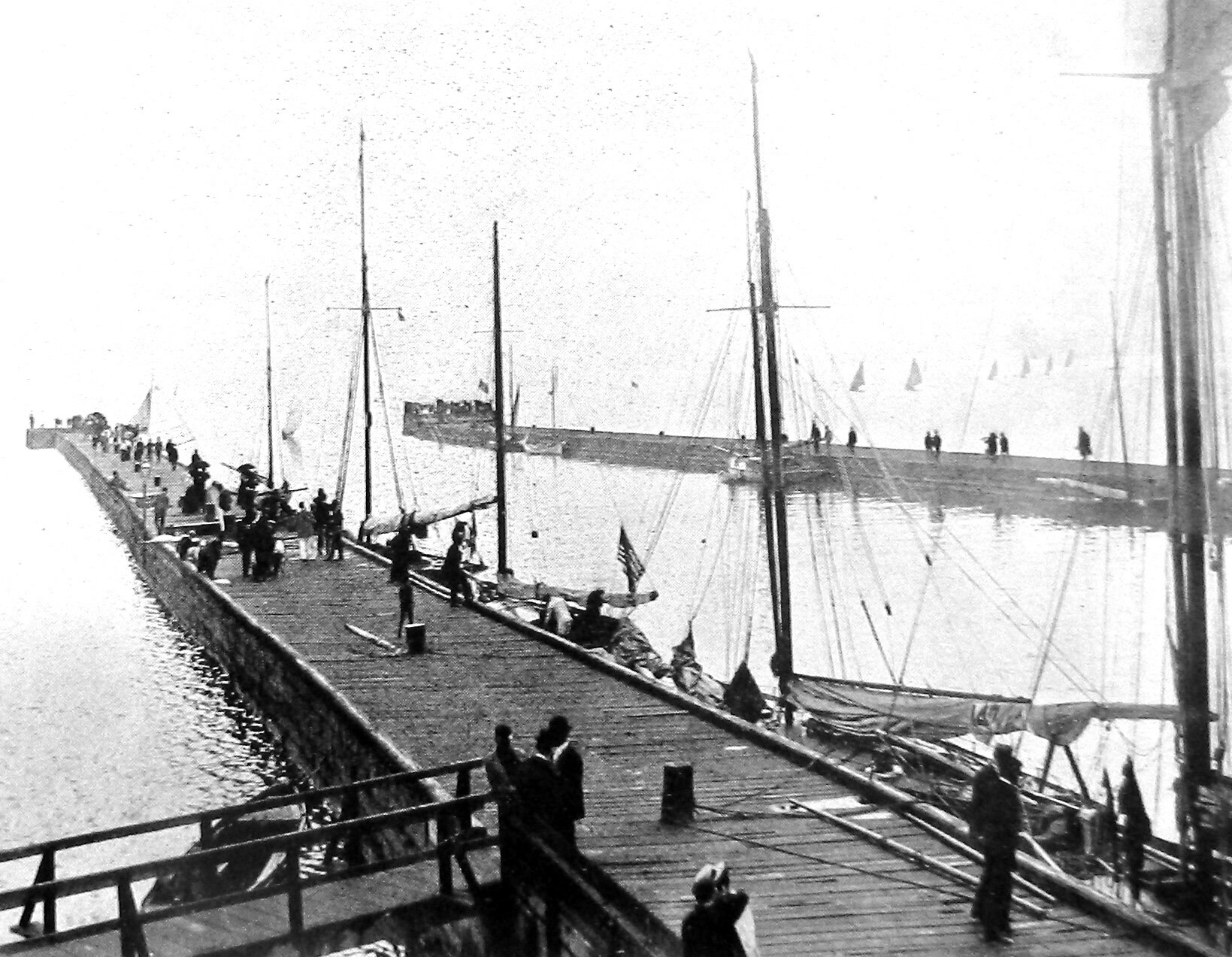Old Port Hamilton
Northern limit of James Street North
Before it became known as the North End, this part of town was called Port Hamilton. Before 1850, it was really a town of its own. The thoroughfares of James Street North and John Street provided the only connection to the small downtown core to the south. The distinction was so pronounced that Port Hamilton pushed for its own bailiff and marketplace in the 1830s.



Merchants and landowners built the first wharves here in the early 19th century. At this point, the bay was cut off from Lake Ontario by Burlington Beach. Incoming goods had to be transferred from lake schooners to Durham boats waiting on the other side.
The opening of the Burlington Canal in 1827 gave the port a boost. Hamilton was well located to be the regional centre of trade. Supplies delivered to the port were transported by local teamsters. They travelled through the break in the Niagara Escarpment at Ancaster Hills to a hinterland that extended as far as the Thames and Grand River valleys.
By the mid-1800s, this section of the waterfront was bustling with activity. At the wharves between MacNab and John Streets, scores of men hoisted crates out of the holds of sailing vessels and steamers into horse-drawn carts on the docks below. Repair shops, boatbuilders, sailmakers and other harbour-related industries appeared along the waterfront. Travellers arrived by passenger steamer. Weary sailors got their land-legs back at the hotels, taverns, inns and boardinghouses on James Street North between Burlington Street East and the water’s edge. The city’s more affluent citizens didn’t venture down to these streets. This was a rough and dangerous place, the domain of ship carpenters, chandlers, sailors, mechanics and dock workers.
The focus of the harbour shifted when the Great Western Railway docks and grain elevator opened in 1854. The new industry along the eastern shore changed the face of the port again in the early 1900s.
At the turn of the century, you could still find the coal yards, freight sheds and wharves of R.O. and A.B. MacKay, E. Browne and Thomas McIllwraith to the west of James Street North. The Canada Steamship Lines served large numbers of passengers well into this century. Ships like the Macassa and the Modjeska made daily runs to Toronto and other ports from the wharf just east of the foot of James Street North. On the weekend, families took smaller vessels like the Mazeppa across the bay to picnic, and to swimming spots at the beach strip or on the north shore.
By the 1940s, many of the traditional functions of the port had disappeared. Commercial wharves lay vacant. Marine passenger service had been cut back. Many area coal dealers had closed up shop. Use of the port shifted from commerce to recreation. The Hamilton Harbour Commission built a new concrete wharf in 1938 for passenger vessels. It also rebuilt the dock facilities of the Royal Hamilton Yacht Club. At the foot of James Street North, the Commission built a new marine railway and dockyards where privately owned pleasure craft could be docked, stored and maintained.
